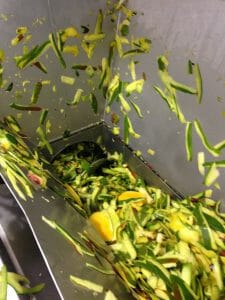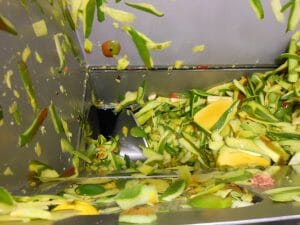Thanks to their versatility and reliability, progressive cavity pumps (PCPs) continue to remain popular among food processors. In fact, annual sales within the European food and beverage market top $100m*. In production areas, PCPs are often used to handle delicate ingredients and components that are difficult to work with, due to high viscosity, the presence of soft solids or shear sensitivity. However, they can make a real difference in other areas too, delivering improved hygiene standards, better efficiency and increased automation.
One such application is waste removal. Most food plants generate by-products, particularly if engaged in primary processing; for example, converting raw materials such as fruit, vegetables, meat or poultry into finished products. Processors must remove these waste by-products from their production areas as efficiently and hygienically as possible, while incurring minimal costs and maximsing any potential revenue. They must also ensure that they adhere to regulations such as the Animal By-Product Regulations (ABPR).
Traditional removal methods for solid waste include: manual removal using tote bins; blown air systems and vacuum systems; and flumes that use water as a transport medium. Food processors often use a combination of these, depending on plant layout, previous experience and regulatory demands. However, they all incur high running costs in the form of manual labour, energy use or water treatment. PCPs offer an alternative in the form of enclosed piped systems which remove solid waste from both high care and low risk areas, without compromising hygiene standards.
Chopping with pumping
As well as the ability to handle extremely high viscosity products which do not flow, SEEPEX has designed a progressive cavity pump that can chop and pump in the same unit. The BTM pump range can handle food waste containing up to 40 per cent dry solids (ds), without the need to add water. This open-hopper PCP features an auger feed into fixed and rotating knives that can chop most products, producing a lower volume of waste which is also easier to handle. Discarded products, defective raw materials, trimmings and rejects — including overrun — can be handled in a single system, enabling pre-treatment and source segregation of waste and by-products, even when they vary greatly in ds content and viscosity. Whole cabbages, wet coleslaw, whole raw potatoes, mashed potatoes, whole chickens and chicken trimmings can all be handled within a single multi-purpose unit. SEEPEX’s BTM ensures efficient and hygienic removal from both high care and low risk areas, providing food processors with a solution that delivers low cost removal while preserving the highest residual value of their by-products – particularly if the resultant ‘soup’ is sent for anaerobic digestion, to be converted into biogas.
PCPs in action
SEEPEX has provided a series of bespoke pumping solutions to Natures Way Foods, a leading manufacturer of fresh convenient foods including ready-to-eat fruit products such as apple, mango and pineapple slices and mixed fruit packs. The preparation of the finished retail products from whole fruit generates peelings, cores and stone waste, all of which must be removed from production areas.
Natures Way Food’s existing systems were not able to handle the volume or variable nature of either the different fruit types or the process methods, some of which are automated whilst others rely on hand trimming. To combat this, SEEPEX installed PCP from the BTM range linked to the output of automated peelers. The pumps operate according to the peeler output via ultrasonic ‘smart’ level controls. The auger feed ensures optimal pump operation without the usual product ‘bridging’ (where product does not pass into the pumping elements) associated with horizontal grinders situated above pumps, which rely on gravity feed.
Trimmings, comprising hand peelings, woody vine, mango and nectarine stones and pits, are collected in tote bins before being tipped into a standalone system, designed by SEEPEX. The equipment comprises a large, customised reception hopper linked to a vertical grinder and PC pump combination which grinds the waste and pumps it through enclosed pipework directly to the waste reception area. Finally, a SEEPEX PCP pump with a large reception hopper, bridge breaker and integral knives provides additional capacity for hand-peeled fruit waste and can also act as a back-up to the other systems.
Bespoke solutions
All SEEPEX waste pumped systems are specified according to the requirements of each waste stream and factory configuration. They have low energy requirements compared to blown or vacuum systems and require no additional water to function efficiently. Their versatility and modular design enables them to cope with most food waste products, delivering cost savings and improved hygiene for today’s food processors.
* 2012 market survey published by Frost and Sullivan










